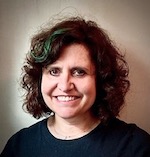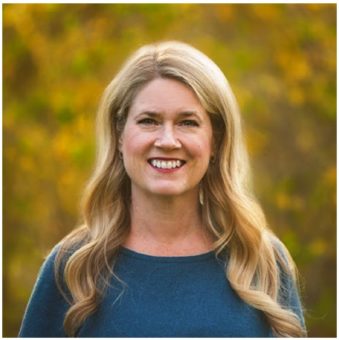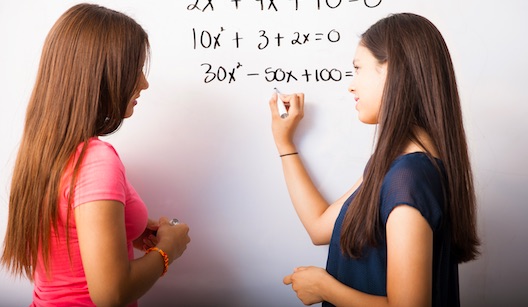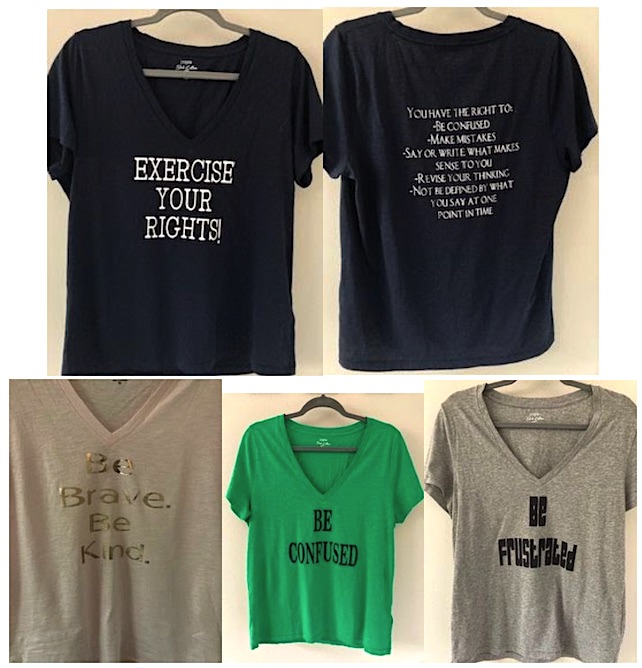A Rough Draft Mindset Boosts Math Learning
By Kathleen Taylor and Amanda Jansen
Students are invited to write and revise rough drafts in other subject matter domains, so why not do so in mathematics?
Incorporating rough drafts and revision into our math classrooms has the potential to further engage middle school students as we move away from treating middle level mathematics as a process of task completion and move toward a process of continuous, ongoing learning.
In her book Rough Draft Math, Amanda shares a process for engaging students in learning that:
- creates a classroom culture that welcomes students’ ideas when they are beginning to form and in early stages;
- enacts mathematics tasks that encourage students to communicate to learn about concepts; and
- explicitly invites opportunities for students to revise their thinking.
We want to share some of the why and the how of rough draft process here.
Share ideas. Build on assets. Rehumanize.
When students share their draft ideas, the teacher encourages students to see what they can learn from each other’s thinking and to build upon the assets of their own initial thinking when revising their work.
Rough draft mathematics can rehumanize the mathematics classroom by making it a place where students can fully be themselves. Their dignity is honored because students’ emerging thoughts are viewed as having strengths that can be built upon through revising.
Math teachers who incorporate rough draft mathematics practices will find they are amplifying the brilliance in the thinking of historically marginalized students. Mathematics classrooms can become spaces where every student understands that teachers see each of them as capable of learning and doing mathematics.
Students also come to see themselves as significant contributors to the learning of the group, and recognize there are a wide range of ways of approaching math problems.
Rough drafts and revision in middle school
Kathleen teaches sixth and seventh grade math students in Cleveland, Ohio, where she has been on a mission to encourage students to revise their work, develop a growth mindset, and embrace the value of learning from mistakes.
Her school’s International Baccalaureate philosophy and program allow students multiple opportunities to provide evidence of learning through varied assessments and assignments. When she read Rough Draft Math, she recognized that it had a direct connection to what she was already trying to accomplish with her students.
During the 2020-2021 school year, Kathleen conducted an action research project to investigate this question: How does encouraging and employing rough draft thinking in mathematics impact the growth mindset and achievement of sixth and seven grade students?
To support remote teaching and learning during the global pandemic, her school district introduced the online platform Schoology, which could be used as a method for teachers to share assignments and feedback, including grades, with students.
As Kathleen pursued her action research project, the online platform streamlined and hastened students’ ability to resubmit work with corrections or improvements, as well as Kathleen’s ability to respond to their work with detailed feedback.
To encourage students to take additional opportunities to learn mathematics by revising and resubmitting their work, Kathleen took the next step during fourth quarter and implemented some of Amanda’s ideas to sustain and extend a “rough draft” mindset.
During these months her district transitioned to a hybrid model of instruction. Most students attended school in person two days a week and remotely two days a week, while other students remained fully remote. To expand her efforts to encourage student revision, Kathleen introduced two new objectives: (1) creating a culture of rough draft thinking, and (2) enacting mathematics tasks that deliberately invite rough draft thinking.
Creating a culture of rough draft thinking
Kathleen wanted to re-establish and adjust beginning-of-year classroom norms as a part of transitioning into hybrid learning. The revised norms provided a mindset and framework for how students learn and work together during mathematics class.
Kathleen expanded the class norms to include Rights of the Learner (Kalinec-Craig & Robles, 2020).

Kathleen also created and wore t-shirts to remind students about her classroom norms and posted images of the shirts on Schoology. Because of COVID protocols, she did not have her own classroom, and the t-shirts served to promote the norms in place of her usual classroom posters.
Math tasks that invite rough draft thinking
Kathleen experimented with a variety of math tasks that might be a good fit for rough draft thinking. She found two strategies to be particularly effective with her students: revising the exit ticket and “bet lines” (Dick et al., 2016).
Revising the exit ticket involved actually turning the typical exit ticket on its head. She gave her students a problem that could serve as a check-in of what they learned from the lesson – but she gave it at the beginning of the lesson. Then she let students revisit the “exit” problem throughout the lesson and at the end of the lesson. Each revisit involved them in some rough draft thinking.
Teachers can ask students to use different colored writing utensils with each round of revision to show how their thinking changed, and students can also be asked to reflect upon how they changed their work and why they changed it. Kathleen’s students were eager to show their thinking at the end of the lesson, after having had time to consider the task while learning new material.
Bet lines involves displaying a portion of a story problem to the entire class and asking students to predict what comes next. This can be done by asking students to predict successive sections of a problem or by asking them to predict questions that they could ask and answer about the story.
Using bet lines and flipping exit tickets generated engagement and deep mathematical conversations among students. Kathleen hoped that these strategies would help students see the value in revising their work.
Kathleen’s first look at impact
As part of her action project, Kathleen compared the frequency of re-submitted assignments and improvement in students’ performance as a result of revising. First and third quarter took place before explicitly promoting a rough draft mathematics classroom culture and before enacting tasks to promote rough drafting.
There was an increase in the percentage of students who resubmitted assignments in the fourth quarter. Among the students who resubmitted assignments during the fourth quarter, 67% of them either maintained or improved their final quarter grades. (Kathleen notes that additional factors possibly contributed to these results, such as disruptions associated with transition to hybrid learning and the lower number of assignments due to having an abbreviated quarter.)
Based on surveys of her students, they changed their attitudes toward rough draft thinking. There was a 3.2% increase in the number of students who reported that they were willing to share their ideas out loud, even if they were not sure they were correct. There was a 9.4% decrease in the number of students who were not willing to share their thinking unless they were sure that they were correct.
Moving ahead with rough draft math
Kathleen felt encouraged by the results of this action research project. She saw strong evidence that the opportunity to resubmit assignments and the strategies for encouraging rough draft thinking resulted in changes in students’ attitudes about revising their mathematics assignments, which appeared to influence their achievement.
She would also like to acknowledge the value of persisting when solving challenging problems. If students persisted in attempting to revise their work and did not increase their scores, this still indicates a willingness to continue to try despite a struggle to succeed.
Based on her experiences with her students, Kathleen is convinced rough draft math can be a powerful approach to learning and doing mathematics, and it can have a lasting impact on students as they continue their math journeys. She’ll be continuing this work in the coming school year and beyond.
Acknowledgment: Kathleen would like to thank Dr. Eddie T. C. Lam, Associate Professor and the Coordinator of Graduate Sport Management Program at Cleveland State University in Ohio, for his assistance in advising her with the design and analysis of her action research project.
References
Dick, L., White, T. F., Trocki, A., Sztajn, P., Heck, D., & Herrema, K. (2016). Supporting sense-making with mathematical bet lines. Teaching Children Mathematics, 22(9), 538-545.
Kalinec-Craig, C., & Robles, R. A. (2020). Classroom Rules Reimagined as the Rights of the Learner. Mathematics Teacher: Learning and Teaching PK-12, 113(6), 468-473.
Jansen, A. (2020). Rough draft math: Revising to learn. Portsmouth, NH: Stenhouse Publishers.
Kathleen Taylor earned her BA in Elementary Education from Heidelberg University and her MA in Curriculum and Instruction from Cleveland State University. She currently teaches 6th and 7th grade Mathematics at Campus International School, one of two International Baccalaureate programs in the Cleveland Metropolitan School District.
Kathleen’s teaching experience has ranged over grades K-8 during her 28 years with the district, most with a focus in Mathematics and Science. She and her husband head a blended family with 5 children (and 3 grandchildren) and reside in Avon Lake, Ohio.
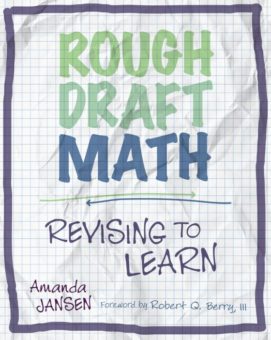
Prior to her current position, Amanda earned her PhD in educational psychology at Michigan State University. She was a middle school mathematics teacher in Mesa, Arizona, and studied mathematics and education for her undergraduate degree, which she earned from the University of Arizona. She enjoys hiking, kayaking, stand up paddle boarding, and playing pinball.

